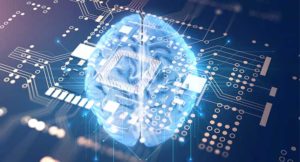The future of Education: Exploring Emerging Trends and Technologies

Information and Communication Technology (ICT) opens up a vast range of opportunities, transforming the learning process by enabling learners to access and share information and ideas using multiple mediums.
When widely used in education, the various mediums promote collaborative learning principles, enhance critical thinking and problem-solving skills, and encourage creativity. And, of course, as technology changes, the need for educators and students to become literate in the various forms of technology increases.
Changes in the 21st Century
The use of technology has resulted in a shift of focus, changing the roles of both teachers and learners. Teachers have become facilitators and navigators of learning rather than knowledge transmitters, as in the past. Teachers help students understand the learning process, teaching them how to research information and make sense of it. As teachers have become more interactive with students, they have had to improve their soft skills, such as dialogue and teamwork.
Teachers now create a learning environment, collaborating on information resources and often learning themselves. Instead of a didactic, explanatory approach, teachers have become more interactive, guiding students in an exploratory, experiential approach.
Learners have become more autonomous and active in their approach to learning. They seek out knowledge using critical thinking and creative skills. The ability to communicate effortlessly via numerous mediums enables collaboration and sharing of ideas with teachers and peers. With additional practice and the utilization of various learning methods, learners can now improve their levels of confidence. They can work at their own pace and improve skills that are lacking without impacting the rest of the class.
As the delivery of knowledge has changed, so too have the curricula been forced to change. Inquiry-based learning has replaced memorization and the rigid delivery of facts. Monologue communication by educators has now become dialogue, with improved collaboration between educators and students. Digital resources offer multi-sensory stimulation using multimedia applications.
Educational institutions can monitor students’ progress throughout their study years, consolidating results from assignments and examinations, recording study plans and facilitating applications for further studies, with details for entry into higher learning facilities being available online.
Emerging trends bring about change and opportunity. As an aspiring leader who wants to be part of that change, studying leadership via an online EdD at Spalding University will help you achieve your professional goals.
Emerging trends and what they mean for education
Learning analytics: The accumulation of, and easy access to, student examination and assignment results enables teachers to identify learning trends. Data analytics can highlight possible problems with a particular student’s progress, enabling timely intervention where necessary.
Augmented Reality (AR) and Virtual Reality (VR): These powerful tools are not only relevant to gaming activities but also provide interactive and engaging content in learning environments.
People who use multiple digital devices are losing their attention span, according to a study undertaken by Microsoft. We are now down from a 12-second attention span to 8 seconds. This has led to a nano-learning trend whereby complex topics are broken down into smaller sections. Apart from shortened attention spans, this method works better, as consuming too much information at once becomes overwhelming and demotivating. AR and VR come into play here, holding the attention of students with excellent visuals and storylines, increasing attention spans exponentially, and improving knowledge retention.
Artificial intelligence (AI): The terms “AI” and “ChatGPT” are currently on everyone’s lips. While it is still in the experimental stages within education, AI has the potential to track learning statistics, create course materials, tap into emotional and social learning, and more.
Social and emotional learning: Developing interpersonal skills, self-control, and self-awareness is essential for a successful future. The increasing awareness of and attention to these skills means they are now being built into curricula.
Learning progressions: Learning progressions are tools that enable teachers to follow and understand students’ progress so that they can plan lessons according to their development and intervene in certain situations where necessary. The evolution of education towards collaborative and communicative skills means that curricula and learning progressions need to be upgraded to keep pace with the changes. Students are meant to have more collaborative and problem-solving skills, but how is the education system approaching this, and are the learning progression tools sufficient? When creating learning progression tools, data is built up over the years. Teachers need to base their evaluations on the current curricula and on what the learner has learned previously. With new teaching methods and technology, that history is missing.
Educational neuroscience: Education neuroscience, or neuroeducation, is an emerging scientific field that brings together researchers working in developmental cognitive neuroscience, educational psychology, cognitive neuroscience, educational technology, and other related disciplines to explore the connection between biological processes and education. Neuroscience researchers investigate neural functions such as reading, mathematics, and attention, including difficulties such as dyslexia, dyscalculia, and ADHD. They determine how these functions and conditions relate to education and then come up with new learning concepts and skills.
Multimedia courseware: Interactive multimedia enables students to work at their own pace and in accordance with their interests and cognitive level, thus eliminating the risk of boredom and underachievement. Using authoring tools, teachers can create multimedia courseware that drill and practice the basic skills and produce individualized instruction and evaluation. It allows students flexibility in terms of time and place, delivery of instructions, and content.
Multimedia gives students more control over their learning, enabling them to work at their own pace without impacting other students’ pace of study. Students can obtain situational and individualized assistance, as well as real-time assessment and feedback.
Blogs: Blogs are websites made up of numerous short articles, or “posts”, arranged chronologically. Posts can link to other websites or blogs on the same website, and teachers can use them in many ways. This method is becoming popular as a medium for knowledge sharing and collaboration on assignments. Blogs do not require much in the way of maintenance, thereby easing teachers’ administrative burden. A website is set up for exclusive use by the group of learners and their teacher, and students can post their work in the form of a blog, thus sharing information with others. A healthy debate about the article can take place in the comments below.
The impact of emerging technology on education
With the range of educational tools to choose from, the risks of opting for something that will not perform to expectations or reach obsolescence in a year or two are significant. Careful planning and consultation with experts in the field are essential to avoid wasting money and resources. Thus, standardization of the various technologies is of utmost importance.
Soft skills are highly sought-after in the workplace and can be negatively influenced by distance and online learning, where students do not interact enough. Skills like people management, cooperation, and creativity are at risk unless specific training is undertaken in these areas.
Impact evaluations on the effects of emerging technology on education
With an increasing range of new technology consistently appearing on the market without being tried and tested by the relevant educational bodies, how do we know the impact on the education system? There is an increasing demand for impact evaluations, particularly driven by people or bodies who fund new technology for educational systems and stakeholders. Measuring the impact of new technologies on education is necessary if we are to have confidence in our educational systems.
The information below refers to a study done by Mutlu Cukurova and Rose Luckin from the College of London, which defines the current emerging technologies present in the educational system and delivers a pragmatic view on the impact analysis of these technologies. The following list identifies some of the emerging technologies that are being introduced to education.
- Virtual reality implementations.
- Augmented reality implementations.
- Mobile learning devices.
- Physical computing tools.
- Internet of Things hardware with sensors.
- Technologies that allow collaborative learning on a large scale.
In the study, the impact is measured not only on the evolving technologies but also on the learners’ experiences, as well as concepts of evidence-based education and how evidence is being generated for impact studies in more traditional educational settings.
Evidence-informed emerging technologies:
Key to the impact study is high-quality evidence relating to the potential of the technology in question to achieve expected learning outcomes, as well as information regarding the process by which the outcomes can be achieved.
However, the article points out that, despite decades of research into educational technology, there is still a lack of robust evidence for various reasons, including:
- Differing opinions relating to how students think.
- The broad range of technologies, their varied uses, and different effects depending on usage.
- Curriculum-related variances in technology use.
- Different pedagogical approaches of teachers.
- Issues relating to identification and the use of research instruments.
- Interpretation of results generated by the use of the instruments.
Other challenges include a lack of investment and interest from technology companies in measuring the impact their products have on education. At the time of publication of the document, there was no requirement for educational technology to be evaluated in terms of its impact on learning before it reached the market. The authors point out that if this were the case with medical, agricultural, engineering, or architectural products, it would be unacceptable and, in some cases, unethical and illegal.
Taking previous studies into account, Cukurova and Lukin demonstrate that the likely effects of technology interventions on learning are only present when outcome measures are closely linked to the expected learning outcomes of technology.
In addition, there has been a tendency in recent educational research to use experimental research methods that aim to generate evidence that informs teaching practice while undervaluing other approaches to research. This positivist research method has raised much debate about how evidence in education is perceived and how to establish a beneficial relationship between educational research and teaching practice and knowledge. Positivist research methods are practical in a more mature system; however, Cukurova and Lukin propose a small-scale rapid cycle evaluation type of investigation for emerging technologies until they reach maturity.
The complexity of these technologies requires an understanding of human-computer interactions as well as knowledge of the wider context in which they are being used.
The initial step of the impact evaluation process needs to be clearly defined. Further requirements are detailed knowledge of the technologies being evaluated, the different variations thereof, and the ways in which they contribute to learning.
A theory of change for emerging technologies:
The essence of emerging technologies is change, and this involves not only change from a technological point of view but also change in learning experiences.
Until change occurs, a state of equilibrium exists between the current forces that drive change and those that resist it. Change happens when the balance of equilibrium is disrupted, either by strengthening the forces that drive change or by removing the barriers that prevent it.
In terms of emerging technology, the methodology for assessing impact and driving change should include the design features of the technology, as well as the required ultimate impact on learners and the potential outcomes that contribute to the final impact.
Using a diagrammatic approach, individual steps should be identified for transparency and efficient management of the project.
The five main steps for creating a theory of change in emerging technology are as follows:
- What is the expected impact of the technology? This step identifies the reason for the required technology and the area of education that this particular product is intended to address a solution. The impact should be measurable and ideally observed in realistic timescales. Short, concise points are used to define the specific, required impact.
- What are the intermediate outcomes of the technology? These outcomes will lead to the final impact and can be defined as the expected change or benefit learners will experience. They should also be measurable and documented in detail.
- What are the planned implementation activities? Activities around a particular technology can encompass many actions, some of which may be irrelevant to the exercise defined in this theory. It is important to limit activities to the specific intermediate outcomes identified in step 2.
- What additional resources or inputs are needed for change to occur? Other resources may include internet access, hardware and software requirements, technological expertise, and training.
- How will users be prepared for this change? This is an important step in the process as it affects the effectiveness of the impact. Users of the technology need to be ready for the change, both in terms of understanding the reasons for it and their acceptance thereof. Where stakeholders are concerned, detailed reports regarding the need for change should be furnished. To combat learning anxiety, test and practice phases can be included in the implementation process. Implementation dip occurs when people are informed of change and must start learning new processes. Support and coaching are necessary to help teachers and learners through this process.
Generation of evidence:
This is an important step when doing an impact assessment on emerging technology; however, quotes furnished by the developers’ clients are not going to impress academics and just serve to confuse the already complex array of information.
Anecdotal evidence from personal statements or claims made by individuals or groups can be used but in limited amounts due to potential quality and subjectivity weaknesses.
Descriptive evidence gained from individuals and organizations that use a specific technology can be useful as it provides insight into the effectiveness of the product. However, it does not control the other variables that are necessary for having an impact on the results.
Correlated evidence is the identification of the relationship between an initiative and an outcome. When the results show correlations, they may be due to the intervention of another factor.
Causal evidence is achieved when the only difference between the control group and the group receiving the technology is the intervention itself. The suggestion is that the best evidence is gathered from randomized control trials.
Meta-level evidence is gained through meta-level analysis in various controlled situations. This type of evidence increases confidence in the process of evaluation.
Conclusion
Emerging technologies play an important role in education; however, if they are not evaluated properly, they can also bring about undesirable effects and disruptions that must be managed. A thorough evaluation process is essential when deciding upon new technology for educational institutions, not only to determine the outcomes but also to aid in the implementation and training processes.
Evaluation of new systems is labor and time-intensive, but the confidence gained in knowing that education methods are sound and beneficial is worth the time and effort.






